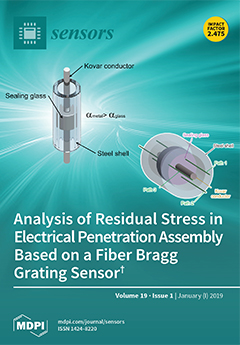Semiconducting metal oxide nanocrystals are an important class of materials that have versatile applications because of their useful properties and high stability. Here, we developed a simple route to synthesize nanocrystals (NCs) of copper oxides such as Cu
2O and CuO using a hot-soap method, and applied them to H
2S sensing. Cu
2O NCs were synthesized by simply heating a copper precursor in oleylamine in the presence of diol at 160 °C under an Ar flow. X-ray diffractometry (XRD), dynamic light scattering (DLS), and transmission electron microscopy (TEM) results indicated the formation of monodispersed Cu
2O NCs having approximately 5 nm in crystallite size and 12 nm in colloidal size. The conversion of the Cu
2O NCs to CuO NCs was undertaken by straightforward air oxidation at room temperature, as confirmed by XRD and UV-vis analyses. A thin film Cu
2O NC sensor fabricated by spin coating showed responses to H
2S in dilute concentrations (1–8 ppm) at 50–150 °C, but the stability was poor because of the formation of metallic Cu
2S in a H
2S atmosphere. We found that Pd loading improved the stability of the sensor response. The Pd-loaded Cu
2O NC sensor exhibited reproducible responses to H
2S at 200 °C. Based on the gas sensing mechanism, it is suggested that Pd loading facilitates the reaction of adsorbed oxygen with H
2S and suppresses the irreversible formation of Cu
2S.
Full article






